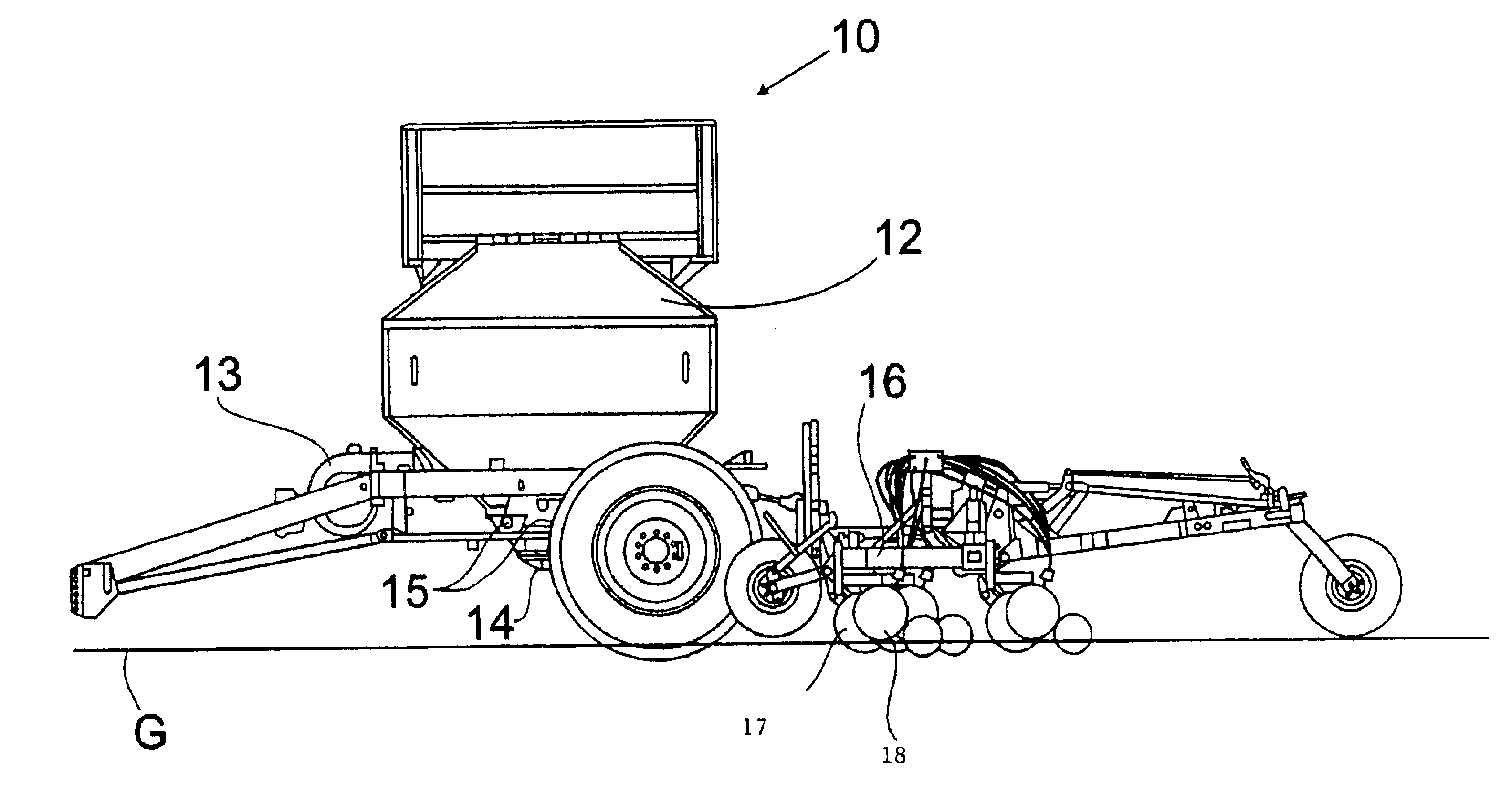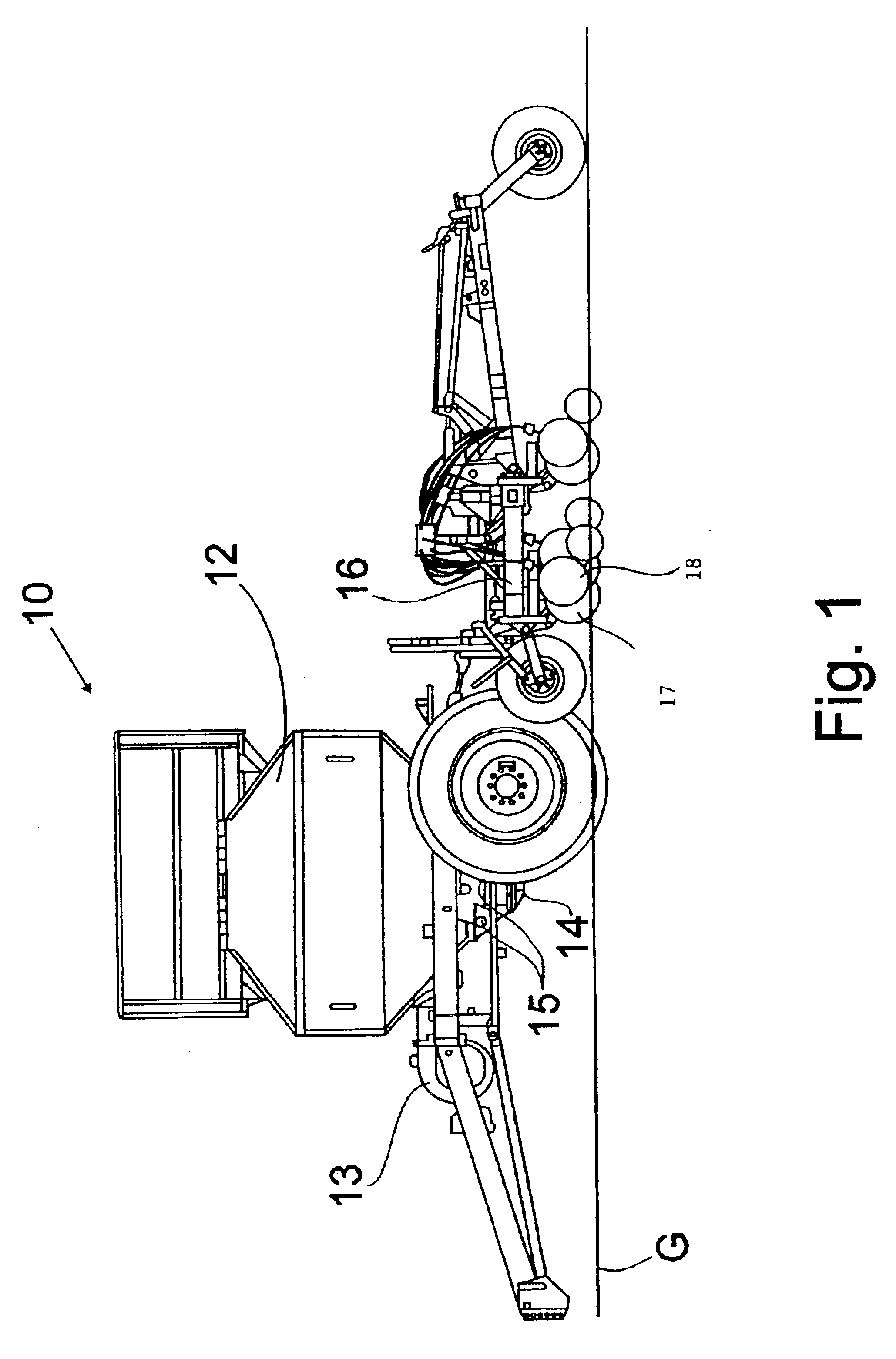Variable rate meter drive system
a variable rate, drive system technology, applied in the direction of servomotors, potato planters, furrow making/covering, etc., can solve the problems of inability to change the meter rate during field operation, cost, complexity, wear, etc., and achieve the effect of eliminating the drive creep of the metering mechanism and being manufactured inexpensively
- Summary
- Abstract
- Description
- Claims
- Application Information
AI Technical Summary
Benefits of technology
Problems solved by technology
Method used
Image
Examples
Embodiment Construction
Referring first to FIGS. 1 and 2, an air seeder drive mechanism incorporating the principles of the instant invention can best be seen. An air seeder 10 is customarily attached to a tractor (not shown) in a conventional manner to provide power for both mobile movement of the air seeder over the ground G and operative power for the operation of the components of the air seeder 10, as will be described in greater detail below. The air seeder 10 is provided with a central tank 12, which can be multi-compartmental to provide storage capacity for seed, fertilizer and other products to be applied to the ground for the planting process. A fan mechanism 13 provides a source of high velocity air to be forced through distribution lines 14 coupled to the tank 12 to receive a supply of product therefrom for dispensing to the ground in a conventional manner. A metering mechanism 15 controls the flow of product into the pneumatic tubing 14 to control the rate of flow of product to the ground G. P...
PUM
 Login to View More
Login to View More Abstract
Description
Claims
Application Information
 Login to View More
Login to View More - R&D
- Intellectual Property
- Life Sciences
- Materials
- Tech Scout
- Unparalleled Data Quality
- Higher Quality Content
- 60% Fewer Hallucinations
Browse by: Latest US Patents, China's latest patents, Technical Efficacy Thesaurus, Application Domain, Technology Topic, Popular Technical Reports.
© 2025 PatSnap. All rights reserved.Legal|Privacy policy|Modern Slavery Act Transparency Statement|Sitemap|About US| Contact US: help@patsnap.com



